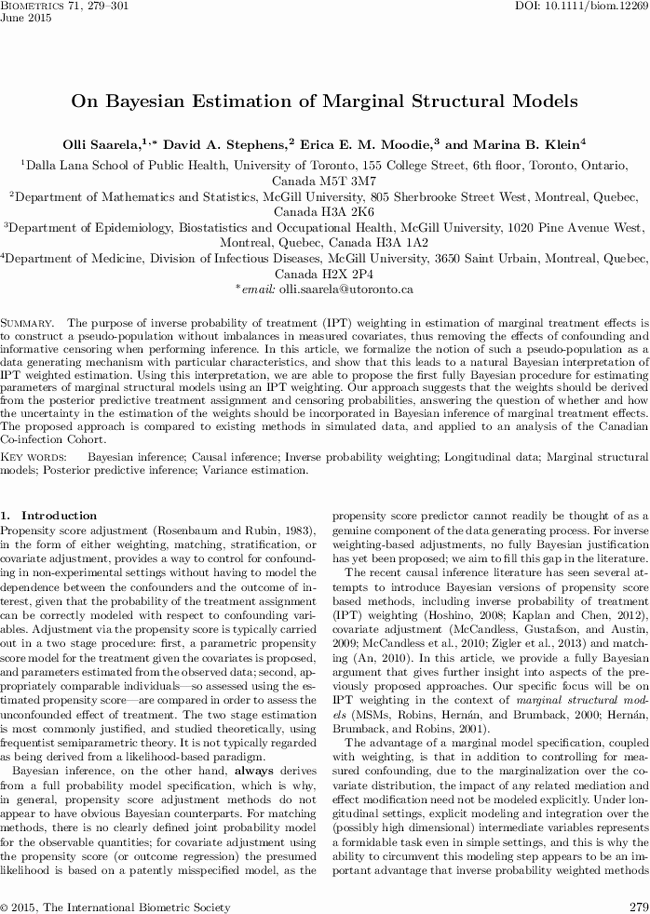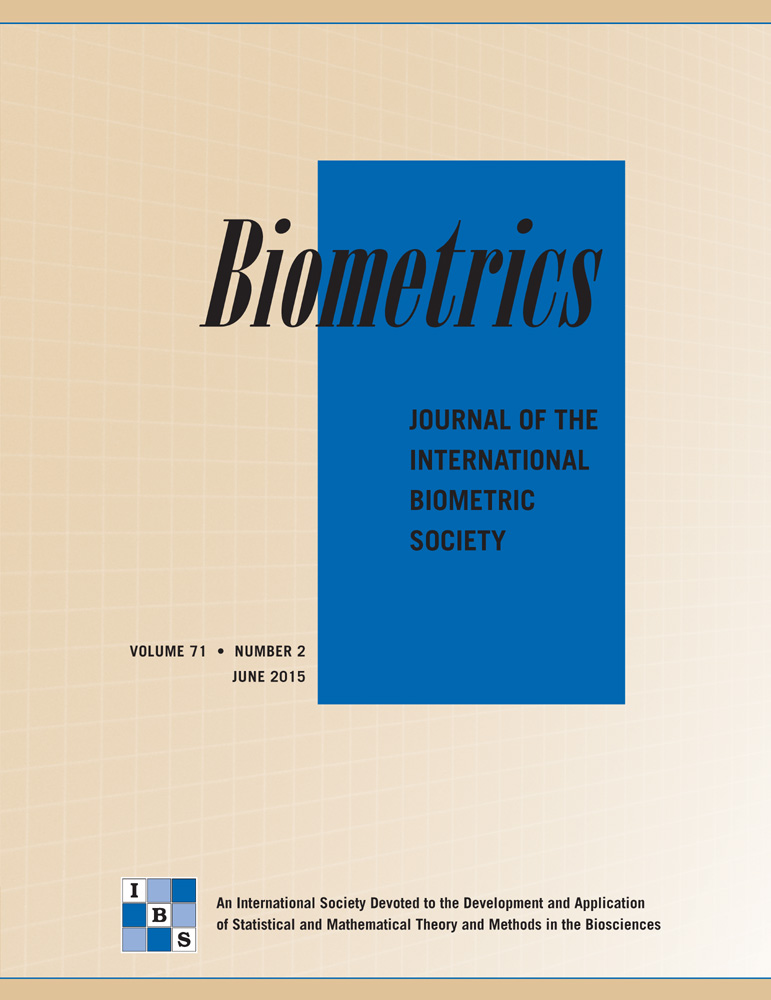Discussion of “On Bayesian estimation of marginal structural models”
James M. Robins
Department of Epidemiology, Harvard School of Public Health, Boston, Massachusetts, 02115 U.S.A.
Department of Biostatistics, Harvard School of Public Health, Boston, Massachusetts, 02115 U.S.A.
Search for more papers by this authorCorresponding Author
Miguel A. Hernán
Department of Epidemiology, Harvard School of Public Health, Boston, Massachusetts, 02115 U.S.A.
Department of Biostatistics, Harvard School of Public Health, Boston, Massachusetts, 02115 U.S.A.
email: [email protected]Search for more papers by this authorLarry Wasserman
Department of Statistics, Carnegie Mellon University, Pittsburgh, Pennsylvania, 15213 U.S.A.
Search for more papers by this authorJames M. Robins
Department of Epidemiology, Harvard School of Public Health, Boston, Massachusetts, 02115 U.S.A.
Department of Biostatistics, Harvard School of Public Health, Boston, Massachusetts, 02115 U.S.A.
Search for more papers by this authorCorresponding Author
Miguel A. Hernán
Department of Epidemiology, Harvard School of Public Health, Boston, Massachusetts, 02115 U.S.A.
Department of Biostatistics, Harvard School of Public Health, Boston, Massachusetts, 02115 U.S.A.
email: [email protected]Search for more papers by this authorLarry Wasserman
Department of Statistics, Carnegie Mellon University, Pittsburgh, Pennsylvania, 15213 U.S.A.
Search for more papers by this author
References
- Bayarri, M. J. and Berger, J. O. (2000). P-values for composite null models. Journal of the American Statistical Association 95, 1127–1142. Rejoinder, pp 1168–1170.
- Bernardo, J. M. and Smith, A. F. M. (1994). Bayesian Theory. Chichester: Wiley.
- Horvitz, D. G. and Thompson, D. J. (1952). A generalization of sampling without replacement from a Finite Universe. Journal of the American Statistical Association 47, 663–685.
- McCandless, L. C., Douglas, I. J., Evans, S. J., and Smeeth, L. (2010). Cutting feedback in Bayesian regression adjustment for the propensity score. The International Journal of Biostatistics 6, 16.
- Robins, J. M. (2004). Optimal structural nested models for optimal sequential decisions. In D. Y. Lin, P. Heagerty (eds). Proceedings of the Second Seattle Symposium on Biostatistics. New York: Springer.
-
Robins, J. M. and
Ritov, Y.
(1997).
Toward a curse of dimensionality appropriate (CODA) asymptotic theory for semi-parametric models.
Statistics in Medicine
16, 285–319.
10.1002/(SICI)1097-0258(19970215)16:3<285::AID-SIM535>3.0.CO;2-# CAS PubMed Web of Science® Google Scholar
- Robins, J. M. and Wasserman, L. (2000). Conditioning, likelihood, and coherence: a review of some foundational concepts. Journal of the American Statistical Association 95, 1340–1346.
- Rotnitzky, A., Lei, Q., Sued, M., and Robins, J. M. (2012). Improved double-robust estimation in missing data and causal inference models. Biometrika 99, 439–456.
- Scharfstein, D. O., Rotnitzky, A., and Robins, J. M. (1999). Adjusting for nonignorable drop-out using semiparametric nonresponse models. Journal of the American Statistical Association 94, 1096–1120.
- Zigler, C. M., Watts, K., Yeh, R. W., Wang, Y., Coull, B. A., and Dominici, F. (2013). Model feedback in Bayesian propensity score estimation. Biometrics 69, 263–273.




